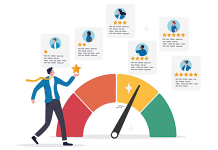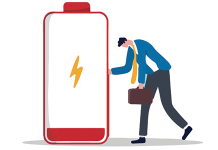Unless companies are regularly crushing their sales goals, they usually focus on ways to boost selling productivity and efficiency. With talented salespeople already on board, optimizing performance in the modern business climate means seeking more out of sales technology.
It’s a valid route to take, one that’s crucial for improving the firm’s sales performance by making the team’s jobs more straightforward. When sales reps have to leave their regular workflow to address repetitive, manual tasks — or perform complex software procedures — they become buried in processes rather than being liberated to go out and sell.
In today’s rapidly changing landscape, companies need an upgrade from their traditional configure-price-quote technology.
Simplifying E-selling
Two-thirds of salespeople deal with administrative and other tasks that steal their time and energy from selling. Current CPQ software pushes tech burdens onto sales teams rather than addressing their needs to reduce or eliminate responsibilities that aren’t actually selling.
Companies’ chosen sales technology should make buying and selling easier across the board. Guided selling tools like a commerce logic engine (CLE) perform this way.
CLE technology handles the complexities that business-to- business sales teams face, and buyers want to be simplified.
While conventional CPQ solutions struggle to manage long product lists and the vast number of features and options on those products, CLE streamlines this workflow. It reduces or removes lengthy and repetitive manual interventions that sales teams usually deal with just to bring products to market. It simplifies complicated procedures like managing parts, product updates, functions, custom options, availability and pricing.
The same advancements benefit B2B customers even more.
Enhanced, Guided Buying
CLE connects customer requirements to the seller’s best solutions using artificial intelligence to gather information and understand buyers’ needs. This process vastly improves the online buying experience. Rather than rifle through a catalog of product options to determine what they need, whether it fits, how it will work, and what it costs, the CLE transforms buyers’ search. It guides customers intuitively and answers these recurring questions by presenting product solutions that each buyer needs.
Such efficiency eliminates customers having to connect with a salesperson to be led by hand. This improvement doesn’t replace sales staff — it increases their effectiveness and boosts companies’ customer experience. By eliminating the need to answer multiple customer questions, sales reps can address specific service requests on unique customer inquiries instead.
This means that sales become a value-added service for buyers instead of a mandatory problem-solving burden to buyers and sellers alike. It also means outdated systems that take buyers partway through a sale before turning them over to a sales- person are now a thing of the past.
Modern businesspeople want self-service buying and are increasingly comfortable making big-ticket purchases this way. By removing manual intervention from ordinary buying-and- selling processes, CLE immediately makes dynamic B2B enterprise e-commerce a reality, highly efficient and a 24/7 option.
B2B E-commerce for the Future
The days of catalog buying and selling, cross-referencing parts with prices, and asking repetitive questions to learn what a customer wants must all move to the dust heap. Buyers in the B2B world demand it. They view dealing with salespeople regarding basic requests as a burden, not a help. Modern buyers want online self-service to purchase big-ticket items, any time, day or night, and they want it omnichannel.
Likewise, sellers want to improve sales efficiency and streamline workflows. They shouldn’t need to become a tech wiz to accomplish this. Sales reps’ time is used best when selling and meeting rising customer expectations. Their greatest tool will scale as product lines expand, data sets increase and the business grows to meet evolving customer demands.
Guided selling technology performs these roles to modernize traditional CPQ tools. It gathers buyer inputs and connects with sales solutions in real time. Tools like CLE handle buying from product introduction, through options and pricing, then processes payments. With CLE at their disposal, salespeople serve their buyers in value-added and customer satisfaction roles rather than everyday problem-solving — all this helps fuel repeat business.
Traditional CPQ technology still meets many business-to- consumer needs, but the B2B business quickly moves on.
Buyers working in this environment want simple e-commerce benefits in their complex business buying. Commerce logic engine technology delivers that convenience, guiding buyers to the right product solution and elevating customer experience and satisfaction while streamlining sales processes along the way.
New technologies in guided selling like CLE are not only meeting customers’ increasingly self-service expectations today, but will be driving B2B e-commerce solutions well beyond the next decade.




